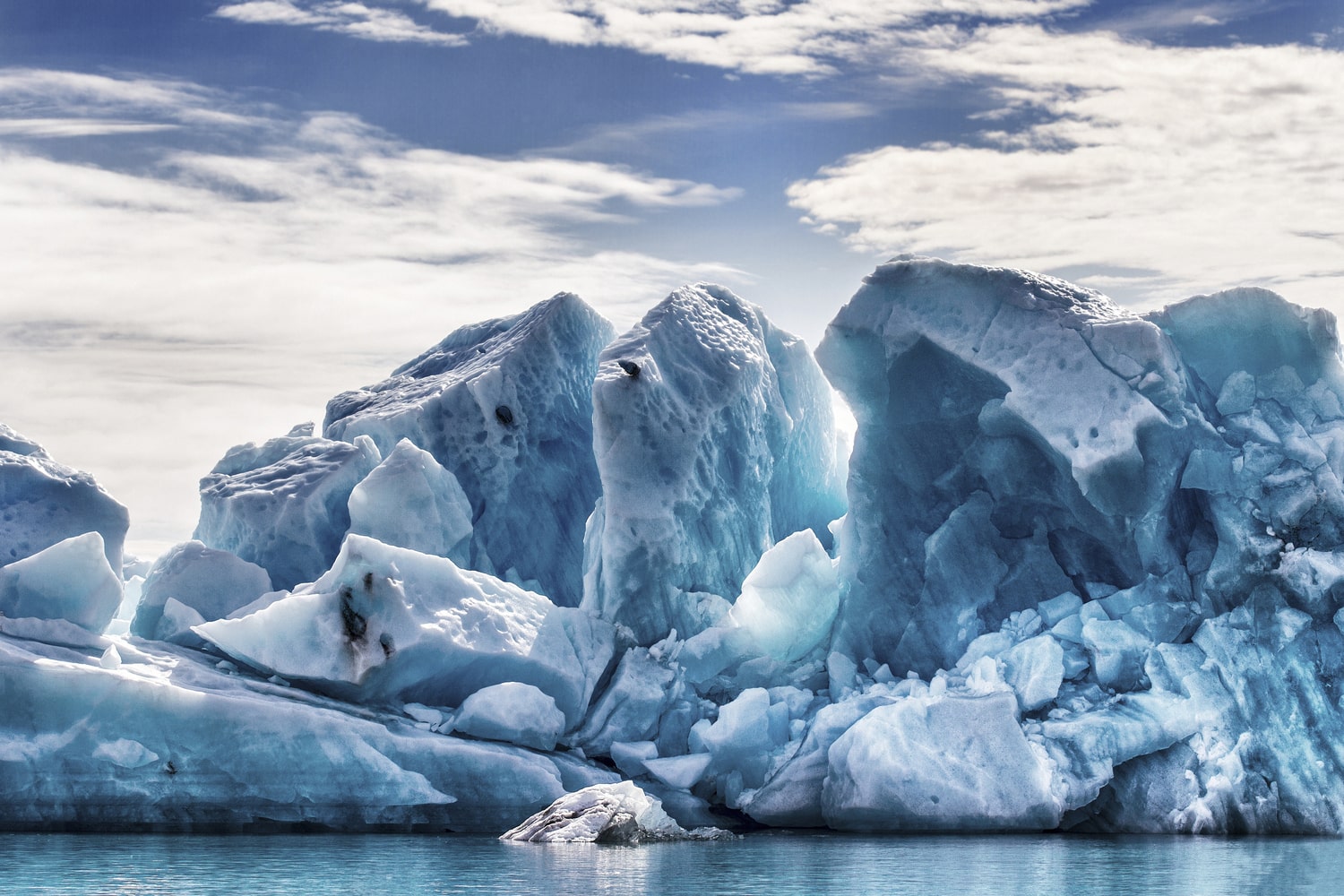Glaciers are impressive giants of nature that preserve thousands of years of Earth’s history. They are not just masses of ice but dynamic systems that constantly move, shape landscapes, influence the climate, and drive hydrological processes. These icy formations hold many secrets that scientists around the world are still working to uncover. Many people underestimate the importance of glaciers, although they play a crucial role in maintaining the Earth’s environmental balance. Here are fascinating facts about glaciers that may change the way you see these remarkable natural features.
- Glaciers cover about 10 percent of Earth’s surface, even though it might seem like there are fewer of them. Most glaciers are found in Antarctica and Greenland, but they also exist on every continent except Australia.
- The largest glacier in the world is the Lambert Glacier in Antarctica, which stretches more than 400 kilometers in length. Its thickness reaches nearly 2.5 kilometers, making it taller than some mountains.
- Over 75 percent of the planet’s freshwater is stored in glaciers. Their melting can drastically impact the global water balance.
- Glaciers are constantly moving, although very slowly. Some of them shift by a few centimeters or even meters per day, creating cracks and deformations.
- There are fast-moving glaciers as well, such as the Jakobshavn Glacier in Greenland. It can move up to 40 meters per day, which is exceptionally fast for a glacier.
- Some ancient glaciers are more than 700,000 years old. The ice within them preserves information about the atmosphere and climate of the past, helping scientists study Earth’s history.
- Inside glaciers, researchers have found frozen animals and even humans who disappeared centuries ago. These discoveries are well-preserved thanks to low temperatures and dry air.
- The melting of glaciers is one of the main causes of rising sea levels. Each year, glaciers lose billions of tons of ice, contributing to the flooding of coastal areas.
- Glaciers form unique land features such as valleys, moraines, lakes, and fjords. When glaciers retreat, they leave behind breathtaking landscapes that attract tourists.
- Some glaciers contain subglacial rivers and lakes that remain in liquid form due to pressure and geothermal heat. One example is Lake Vostok in Antarctica, located beneath four kilometers of ice.
- The weight of glaciers is so great that it causes the Earth’s crust to sink. After glaciers melt, these areas slowly rise again, a process that can take thousands of years.
- The color of glaciers ranges from white to deep blue. The blue color appears when ice becomes compressed and air bubbles are squeezed out, making the ice more transparent.
- In some cases, glaciers can trigger natural disasters such as glacier lake outburst floods or avalanches. These events can cause severe damage in mountainous regions.
- As glaciers move, they grind the rock beneath them, creating a fine powder called glacial flour. This process significantly alters the shape of the landscape.
- Some glaciers are so massive that they create their own microclimates. They can generate fog, influence wind patterns, and affect precipitation in nearby areas.
- Snow that turns into glacial ice undergoes a long process of compaction. It can take decades or even hundreds of years before the snow becomes dense glacial ice.
- Glaciers contain microorganisms that are capable of surviving in extreme conditions. Studying these organisms can provide insights into the possibility of life on other planets.
- Glaciers in the Himalayas provide water to millions of people, feeding major rivers such as the Ganges, Indus, and Brahmaputra. Their disappearance poses a serious threat to the region’s ecosystems.
- Glaciers sometimes produce sounds similar to rumbling or cracking, known as glacial noise. These sounds are caused by internal stresses and movements of the ice.
- Glacier hiking and tours have become popular tourist activities in countries like Iceland, Norway, Switzerland, and Canada. However, such trips require special equipment and preparation.
- Some glaciers have dark streaks caused by layers of dust, volcanic ash, or pollution. These reduce the glacier’s albedo, or reflectivity, making them melt more quickly.
- There is a specific scientific field called glaciology that focuses on studying glaciers. It combines geology, climatology, hydrology, and ecology to analyze ice masses comprehensively.
- The retreat of glaciers due to global warming affects not only sea levels but also local weather, plant life, and animal populations. In some regions, glaciers have completely disappeared and can now only be seen on historical maps.
- Traces of glaciers have also been discovered on Mars and other celestial bodies, where the ice may consist of frozen carbon dioxide or water. These findings encourage further exploration of extraterrestrial environments.
These amazing facts about glaciers show just how important and unique these natural formations truly are. Though they may seem motionless, glaciers are constantly reshaping the face of the planet. Research into glaciers helps us better understand Earth’s past and predict future climate changes. We hope these interesting facts have given you a new perspective on the fascinating world of glaciers.





